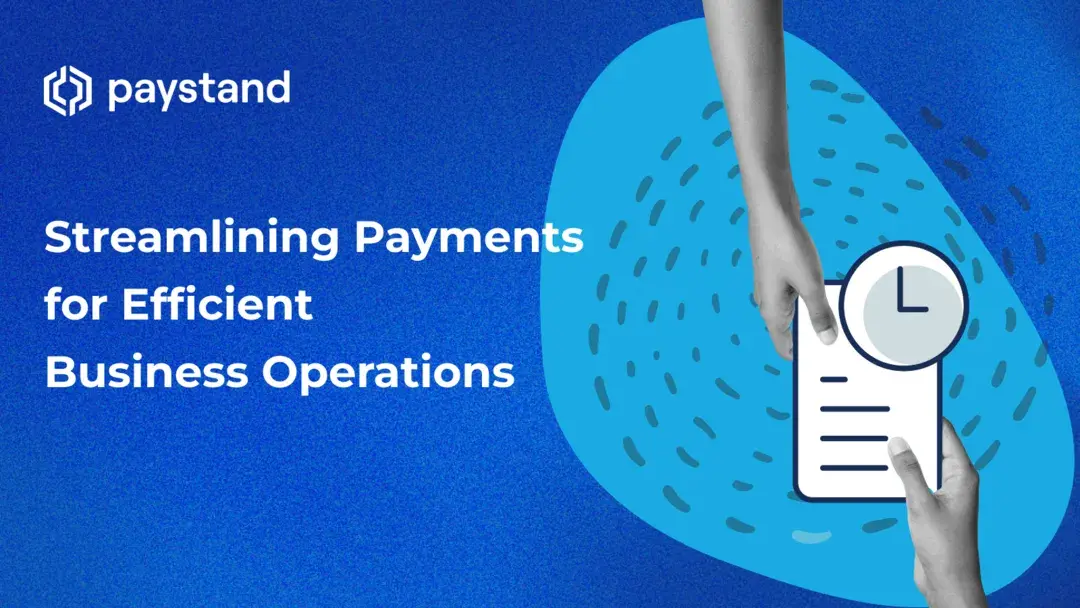Streamlining Payments for Efficient Business Operations

Streamlining payment processes is essential for businesses looking to enhance efficiency and reduce errors. Simply transferring manual processes from paper to the cloud is insufficient. Businesses need capabilities beyond basic digital transitions to optimize payments.
A comprehensive approach to payment processing can significantly improve a business’s financial operations. By adopting advanced features, businesses can enhance their payment processes, making them more efficient and less error-prone. This speeds up transaction times and provides better security and transparency, which is crucial for maintaining trust and compliance in financial dealings.
Implementing key features like self-service payment portals, bank payment networks, collections automation, verified receipts, automated reconciliation, top-notch security, and enhanced analytics help streamline payments. By incorporating these elements, businesses can reduce manual workloads, strengthen security, and make more informed financial decisions, ultimately leading to a more efficient and reliable payment system.
What is Streamlined Payment?
Streamlined payment refers to optimizing payment processes to make them more efficient, faster, and less prone to errors. This process impacts financial health, operational efficiency, and customer satisfaction. Streamlining payments involves strategies and technologies like:
Manual Tasks Automation
Payment processing involves manual intervention, such as data entry, invoice generation, and reconciliation. These tasks are time-consuming and susceptible to human errors, leading to discrepancies, late payments, and additional costs.
Automation addresses these issues by handling repetitive tasks. For instance, automated invoicing systems can generate and send invoices based on predefined criteria, ensuring consistency and accuracy. Automated reconciliation tools can match payments with invoices without human intervention, drastically reducing the time spent on these activities and minimizing errors.
Processing Times Reduction
Streamlined payment processes also focus on reducing processing times. Payment delays can negatively affect cash flow, supplier relationships, and business operations. By implementing automated workflows and integrating real-time payment systems, businesses will see a significant late payment reduction
Real-time payment solutions, such as bank-to-bank transfers, ACH, EFT, and digital wallets, enable instant or near-instantaneous transactions. This speed improves cash flow management and enhances the overall efficiency of the payment process.
Payment Method Integration
Another crucial aspect of streamlined payment is ensuring seamless integration with various payment methods. Modern consumers and businesses use various digital payment options, including:
- Credit and debit cards
- Bank transfers
- Digital wallets
- Cryptocurrencies
A streamlined payment system should accommodate all these methods, providing flexibility and convenience to users. This involves integrating payment gateways and third-party services that support multiple payment options, ensuring that transactions are processed smoothly regardless of the method used.
Seamless integration also means that payment data from different sources is consolidated into a single system, providing a unified view of financial transactions and simplifying accounting and reporting processes.
The Profit Paradigm Podcast
We're flipping the script on finance. No fees. No friction. Just pure cash-flow power. If you're ready to automate, accelerate, and take control of your revenue, this is where the future of money movement begins.
What Are the Benefits of Streamlined Payments?
Streamlined payments offer numerous advantages that can enhance efficiency, reduce costs, and improve the overall payment experience for consumers and businesses. Here are some of the key benefits of streamlined payments:
- Convenience. Simplified payment processes make it easier and more convenient for customers to complete transactions. By reducing the steps, such as data-entering or complex checkout processes, streamlined payments create a seamless and user-friendly experience.
- Speed. Fast transactions allow quick and efficient purchases, and customers appreciate the ability to complete their purchases without encountering unnecessary delays.
- Security. Advanced security measures protect customer information and prevent fraud. These measures may include tokenization, encryption, and fraud detection systems, ensuring that sensitive data is kept safe during payment.
- Reduced Costs. Businesses can save time and resources by eliminating manual processes like check processing or data entry. Additionally, streamlined payments often offer lower transaction fees than traditional payment methods.
- Real-Time Processing. It provides immediate transaction confirmation, eliminating the need for customers to wait for checks to clear or for businesses to reconcile payments manually. This reduces the risk of errors and improves cash flow management.
- Improved Customer Experience. A convenient, fast, and secure payment experience enhances customer satisfaction. This positive experience can foster loyalty and repeat business, leading to increased sales and improved customer retention.
- Data Insights. Customer behavior and spending patterns can generate valuable data insights. This information can be used to monitor customer payments, identify overdue invoices, and enhance cash flow management.
- Scalability. Streamlined payments are scalable, allowing businesses to handle increased transaction volumes without sacrificing efficiency or security. This scalability is crucial for businesses experiencing rapid growth or seasonal fluctuations in demand.
- ERP Integration. This integration streamlines operations, eliminates manual data entry, and provides a centralized platform for managing payments and other financial transactions.
- Compliance with Regulations. Features like collecting and storing customer consent for data processing and handling sensitive financial information securely are often included in streamlined payments to help businesses comply with industry regulations and data privacy laws.
Streamlined Payments Key Features
1. Self-Service Payment Portal
A self-service payment portal offers a frictionless experience for customers, allowing them to effortlessly fulfill invoices with their chosen payment method, such as credit card, ACH payment, bank payment, or eCheck. This feature reduces the workload for your accounts receivable team by eliminating the need for manual intervention. It also provides several benefits:
- Customers can select the payment method that best suits their needs, including recurring billing options.
- Costly paper checks and other slow payment methods are eliminated.
- Businesses can decide which payment methods to accept, pass processing fees to customers as convenience fees, or incentivize preferred methods like ACH payments.
2. Bank Payment Network
Joining a bank payment network leverages the power of electronic payments, cutting out expensive processing costs and lengthy verification wait times. This feature allows direct bank-to-bank transfers, streamlining the payment process.
3. Collections Automation
Automated collection plans are vital for speeding up the financial management process. By creating flexible and automated follow-up sequences, businesses can focus only on genuinely delinquent accounts, significantly reducing the time spent on collections.
4. Verified Receipts
Digitally notarized receipts ensure clean audits and transparent financial management. This feature provides the business and the customer with a notarized receipt containing all essential payment information, fully automated to eliminate manual tagging and preparation.
5. Automated Reconciliation
Automating the invoice matching process saves time and reduces costs associated with manual accounts receivable tasks. This feature allows finance professionals to focus on outstanding payments that need attention rather than spending hours on repetitive matching processes.
6. Top-Notch Security
An integrated payment solution must offer enterprise-grade, bank-level security, including extensive encryption, tokenization, and vault infrastructure for data storage. Ensuring the solution is "Built-for-NetSuite" and PCI DSS compliant adds an extra layer of security and reliability.
7. Enhanced Analytics
End-to-end visibility over the payment process is crucial for making informed decisions about cash flow and payment strategies. Advanced analytics dashboards provide insights from every point in an invoice’s lifecycle, helping businesses understand what works and needs improvement.
Get Ahead with Streamlined Payments and Paystand
Streamlined payment processes are essential for businesses aiming to enhance efficiency, reduce operational costs, and improve customer satisfaction. Businesses can transform their financial operations into more efficient, reliable, and secure systems by implementing self-service payment portals, bank payment networks, collections automation, verified receipts, automated reconciliation, top-notch security, and enhanced analytics.
Paystand provides a robust solution that integrates these essential features, ensuring businesses can manage their payment processes seamlessly. With integration capabilities for major ERPs like NetSuite, Paystand offers an innovative approach, including using blockchain technology for secure and transparent transactions. This makes Paystand a comprehensive choice for modern financial management.
To delve deeper into how blockchain payments can revolutionize B2B transactions and why your company needs this technology, download our eBook: Why B2B Companies Need Blockchain Payments.





